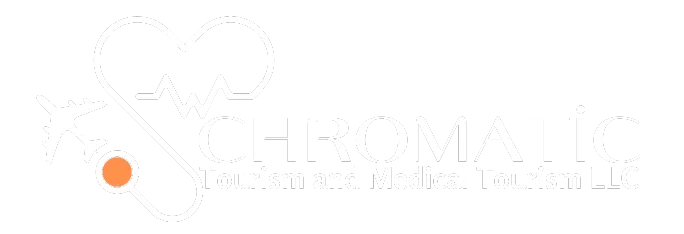At Chromatic Medical Tourism, we specialize in connecting international patients with leading neurologists and JCI-accredited hospitals in Istanbul for the diagnosis and treatment of muscle diseases. These conditions, which include muscular dystrophy, myasthenia gravis, and other neuromuscular disorders, can significantly impact strength, mobility, and quality of life. Our goal is to provide personalized care to help patients manage their symptoms and improve their overall well-being. With our comprehensive support, your journey to better health will be seamless, safe, and stress-free.
Why Choose Istanbul for Muscle Disease Treatment?
-
- World-Class Expertise: Our partner neurologists and neuromuscular specialists are leaders in their field, with extensive experience in treating complex muscle diseases.
- Advanced Technology: State-of-the-art facilities equipped with the latest diagnostic and treatment tools.
- Affordable Excellence: High-quality care at a fraction of the cost compared to Western countries.
- Personalized Care: Tailored treatment plans to meet your unique needs.
What are Muscle Diseases?
Muscle diseases, also known as neuromuscular disorders, affect the muscles and the nerves that control them. These conditions can lead to muscle weakness, fatigue, and mobility issues. Common muscle diseases include:
-
- Muscular Dystrophy: A group of genetic disorders causing progressive muscle weakness and degeneration.
- Myasthenia Gravis: An autoimmune disorder that disrupts communication between nerves and muscles, leading to weakness and fatigue.
- Amyotrophic Lateral Sclerosis (ALS): A progressive condition affecting nerve cells in the brain and spinal cord, leading to muscle weakness and paralysis.
- Polymyositis and Dermatomyositis: Inflammatory conditions causing muscle weakness and skin rashes.
- Peripheral Neuropathies: Disorders affecting the peripheral nerves, leading to muscle weakness and sensory issues.
Our partner specialists use advanced techniques, including medication management, physical therapy, and innovative treatments, to provide effective care for these conditions.
Our Comprehensive Muscle Disease Services
At Chromatic Medical Tourism, we provide end-to-end support for patients seeking treatment for muscle diseases in Istanbul. Our services include:
- Diagnostic Services
-
- Comprehensive Evaluations: Neurological exams, blood tests, electromyography (EMG), and imaging (MRI, CT scans) to accurately diagnose muscle diseases.
- Genetic Testing: For hereditary conditions like muscular dystrophy.
- Personalized Treatment Plans: Tailored strategies to manage symptoms and improve quality of life.
-
- Treatment Options
-
- Medication Management: Prescription of medications to control symptoms, such as immunosuppressants for myasthenia gravis or corticosteroids for inflammatory myopathies.
- Physical and Occupational Therapy: To improve strength, mobility, and daily functioning.
- Advanced Therapies: Including intravenous immunoglobulin (IVIG) or plasmapheresis for autoimmune conditions.
- Supportive Care: Assistive devices, such as braces or wheelchairs, to enhance mobility and independence.
-
- Support and Follow-Up
-
- Lifestyle Guidance: Tips for managing symptoms through diet, exercise, and adaptive techniques.
- Counseling Services: Emotional support for patients and families coping with muscle diseases.
- Ongoing Monitoring: Regular follow-ups to adjust treatment plans as needed.
-
- Travel and Accommodation
-
- Visa Assistance: Help with travel documents and logistics.
- Comfortable Accommodation: Stay in convenient, patient-friendly hotels or recovery centers.
- Multilingual Support: 24/7 assistance from patient coordinators who speak your language.
-
Why Choose Chromatic Medical Tourism for Muscle Disease Treatment?
- Expertise and Compassion
-
- We partner with JCI-accredited hospitals and renowned neurologists to ensure the highest standard of care.
- Our team understands the challenges of muscle diseases and provides compassionate, personalized support.
-
- Transparent Pricing
-
- No hidden costs or surprises – we provide clear, upfront pricing for all services.
-
- Personalized Care
-
- From diagnosis to ongoing management, we tailor our services to meet your unique needs.
-
- Seamless Experience
-
- We handle every detail, so you can focus on your health and well-being.
-
Frequently Asked Questions (FAQs)
- What are the symptoms of muscle diseases?
-
- Symptoms vary depending on the condition but may include muscle weakness, fatigue, difficulty walking, cramps, or twitching.
-
- Can muscle diseases be cured?
-
- While some muscle diseases cannot be cured, they can often be effectively managed with medication, therapy, and supportive care to improve quality of life.
-
- How are muscle diseases diagnosed?
-
- Diagnosis typically involves neurological exams, blood tests, electromyography (EMG), imaging (MRI, CT scans), and sometimes genetic testing.
-
- Can I combine treatment with tourism in Istanbul?
-
- Absolutely! Istanbul offers a rich cultural experience, and we can arrange comfortable, patient-friendly activities during your stay. You can check our tourism itinerary packages here.
-
- How do I get started?
-
- Contact us today to schedule a consultation. Our team will guide you through every step, from medical evaluations to travel arrangements.
-
Take the first step toward better neurological health. Contact Chromatic Medical Tourism to learn more about muscle diseases treatment in Istanbul or to schedule a consultation. Our team is here to answer your questions and provide the support you need for a successful medical journey.
Let us help you protect your brain health with world-class care in Istanbul.


